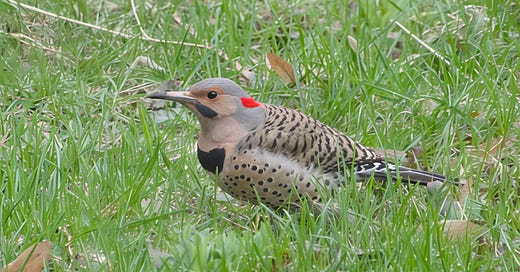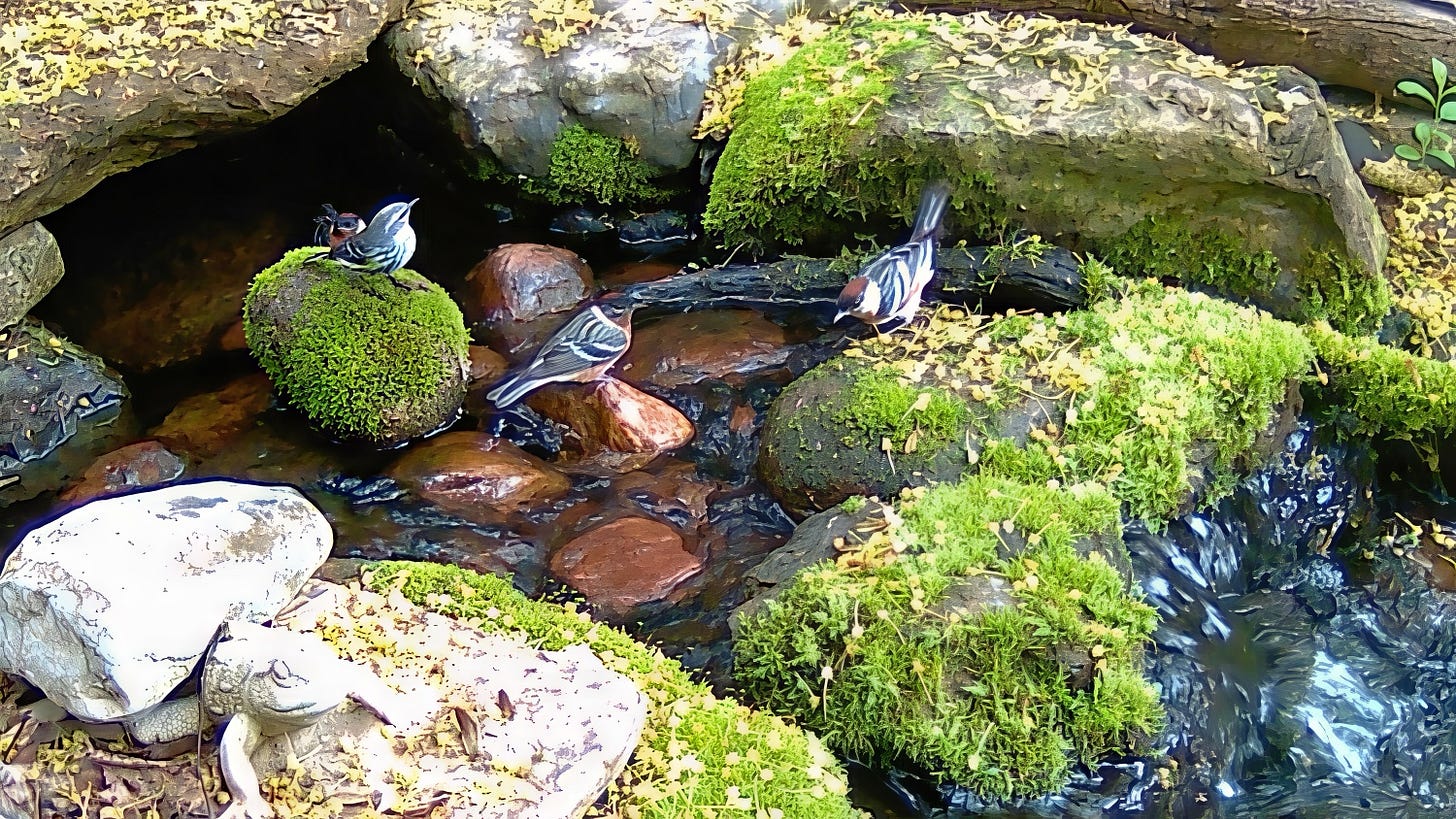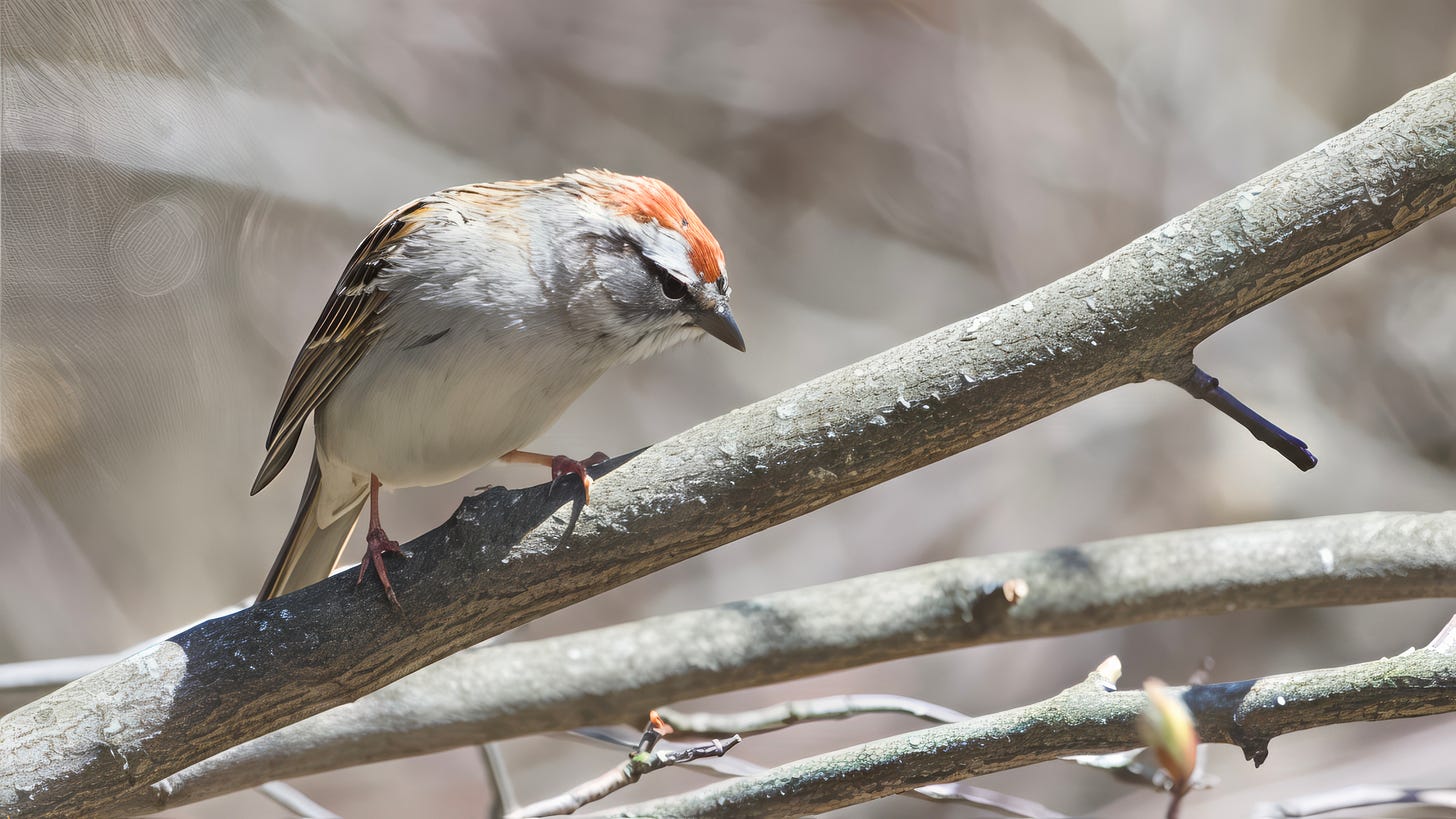… this is a book that reasserts a vital truth: nature isn’t just found in some remote mountain or protected park. It is all around us. It is in us. It is us.
Common Ground, Rob Cowen
To know fully even one field or one land is a lifetime’s experience … a gap in a hedge, a smooth rock surfacing a narrow lane, a view of a woody meadow, the stream at the junction of four small fields – these are as much as a man can fully experience.
Patrick Kavanagh, ‘The Parish and the Universe’
It goes without saying that we all want to live in cities that are both healthy and full of life. One step in this direction is to consider that land stewardship is more than just owning a piece of land - be it suburban garden or a countryside estate. I think that we have responsibility to take care of our environment and ensure there is a rich diversity of different species of plants and animals wherever we live, in both cities and suburbs. To do this effectively, we use sustainable practices that help animals and plants move around easily, grow in their natural habitats. Natural habitats that we create by thoughtful design and maintenance of our gardens for example, where we nurture plants native to the area - practices that all help make cities more resilient and support wildlife. This doesn’t mean that we cannot also have roses, of course we can.
Last week I wrote about plants and insects in our gardens and neighborhoods at this time of the year. Today, let’s think about how early spring and northbound bird migration will add to our personal enjoyment of the natural world.
Early Birds
We have reached the end of April and are about to burst into May … but some spring expectations have been a little delayed this year by colder than usual weather. Last week I wrote about seasonal plants and insects to look out for - this week I will look at birds. A few very early migrants have arrived in the Montreal area in the past week or two but still, the majority of birds at the moment will be resident species that have stayed faithfully around our homes and streets all winter, frequently supported by the garden feeders many of us make available. In fact, this morning has been one of the busiest bird-mornings in the garden with approaching 20 species by breakfast time … including a flock of “newly-yellowed” Goldfinches fighting over the feeders and lining up like glowing fairy lights in a large red-bark dogwood bush. Compensation for the continuous rain.
We are fortunate indeed, living here. Apart from there being many species of birds that nest and breed in and near the town, there are many more that travel through this region migrating in spring in passage to and from their breeding grounds in the more Northern forests.. Montreal is right under the so-called eastern flyway and with luck and preparation many birds can be seen right in our gardens. We have a personal list of some 120 different species of birds seen just in our garden over the years we have lived here. It is a rare year indeed when we cannot expect to see some 70-80 species at one time or another. If they can be seen in our garden/yard, then they can just as likely be passing through your garden at some point.
I cannot forget the first Canadian bird that I noticed after moving into our house shortly after immigrating from England 27 years ago. Although there are exceptions, many European birds are, shall we say, more subtly coloured than the ones we live alongside in BaieD’Urfé. The previous owners of the house had left a more than somewhat dilapidated bird feeder on a pole not far from the kitchen window. I think one of us must have put some food out – probably dried crusts of bread. I was making an early morning cup of tea and while waiting for the kettle to boil looked out of the window to see a startlingly bright red bird descend onto the feeder and started gobbling down whatever food it found.
It was, of course, a male Northern Cardinal, and it left me speechless. Such a gorgeously coloured and unexpected visitor. From that moment on I was hooked. We just had no alternative but to buy some local field guides and learn all we could about Quebec birds. One of the first things I learned was that Canadian birds really like to put on the bright feathers and show some colour … well, in the breeding season at least.
Interestingly, ubiquitous as Cardinals are these days in this region, it’s only a few decades since they crossed the border and extended their range from the USA. We might assume this was triggered by climate change, and that may be contributory, but it seems more probable that their arrival was simply to take advantage of the food and shelter opportunities, and the regularly filled garden feeders, of a booming human population. But the Cardinal is a bird that everyone will easily recognize and probably see or hear daily. It’s April, it’s still cold. What else can we see - I suggest at least 40 and potentially another 10 or more species if lucky should not be too hard to spot.
Those 50 or so bird species will be made up of three groups. Firstly, there are the year-round residents such as the Northern Cardinal together with Black-capped Chickadees, three species of Woodpeckers, Blue Jays, a couple of Hawks and several more species. Then there are early spring migrants starting to come back from the south. There are Common Grackles and male Red-winged Blackbirds to be expected, two or three species of Sparrows such as Song, Chipping and Fox Sparrows. The other two Woodpeckers that don’t hang around in the cold will be back soon - look for Yellow-bellied Sapsuckers and Northern Flickers,. On the rivers and lakes some early waterfowl. Lastly, there are hardy birds that come south to us for the winter, thinking it quite mild and which are shortly to fly back north to their breeding grounds. These include Dark-eyed Juncos, White-crowned and White-throated Sparrows, Pine Siskins and just possibly lingering Common Redpolls, though they have usually returned north by now.
In other words, if you want to make a start on your birding life lists, don’t sit back and let this time of year pass you by. Get outside with your binoculars and enjoy some fine birds, all easy to see before there are leaves on the trees for them to hide behind.
I like to walk down to the river/lake as soon as the ice has broken up and there is open water. The main reason the ducks and other waterfowl leave us in winter is not really the cold, they can handle that remarkably well, but the ice which stops them feeding as they cannot dive after weed and small crustaceans etc. Once the water opens up they will come back and small groups can be seen on the river. Some stick around and nest here, though with all the shoreline houses, there are limited opportunities to do that safely, while others rest and refuel before heading out to less developed regions with well-stocked lakes and rivers. Almost certainly, there will be groups of Canada geese sitting on blocks of ice beside the open areas. These big birds are opportunistic feeders and where circumstances permit have lately begun to divide into resident flocks and migratory ones. A little further south, Toronto for example, the resident birds manage to stick around all winter but until climate change progresses a little further ours do move on eventually – but only so far as they have to and no further. It’s just a matter of time.
There will be Mallards and every so often a related American Black Duck to be seen from the shoreline. As the waters open up more and more, you can look out for other species. Common Goldeneye perhaps, a Shoveler, Gadwall, perhaps a Northern Pintail might be on the water if you scan for them. Scaup usually appear on the river in groups.
We are starting to enjoy the first waves of a rapid build-up of new birds arriving in our region. There will be some of the shorebirds where there is habitat to appeal to them, though despite living beside one the worlds “great” rivers, there is a lot of that nearby. Look out for the first warblers: Pine Warbler, Palm Warbler, and Yellow-rumped Warbler may be seen soon; the last one in your garden and the other two in the arboretum (edit: already reported by others mid-week).
Purple Finches are already passing through here as they head back north. They like garden feeders and bush-filled gardens and parks. Look up into the sky for the first signs of non-resident Hawks, such as the Broadwinged Hawk, making their way northward. Hawks in passage like to cross rivers where the water is the narrowest, so for us they are funnelled over Ile-Perrot and on to our side of the river at the western end of the island.
On the river you could be fortunate enough to see Common Loons, though more likely to hear them passing overhead. Small, common birds such as Ruby-crowned Kinglet, White-throated Sparrow, and Brown Thrasher are already flitting about.
Right at the end of April, increasing numbers of swallow species are observed, though not many settle in town. Tree Swallows will nest in boxes provided for them, such as those in the arboretum, while Cliff Swallows build nests under the overhang of the weather radar dome beside the arboretum entrance road. I would love to be able to tell you that the very first Purple Martin can be enjoyed, but this is a bird that is in trouble. On the bank of the river just west of the town hall and beside the boat jetty is a Purple Martin "condo" on a pole. This was donated to the town some years ago by Bird Protection Quebec to replace an older one that had fallen into disrepair. For years, the Purple Martins would faithfully move in and raise their young, with the adults being easily visible flying over the lake scooping up insects. Sadly, this is a bird whose population has crashed in line with a nationwide fall in the number of insects in recent years and since 2019 they have barely been seen in town. Nevertheless, keep an eye out - one day they may find their way home again.
The Bird with Four Sexes …
Well, perhaps not exactly, but the White-throated Sparrows uniquely behave in some ways as if there were four. This short article explains …
https://www.audubon.org/magazine/fascinating-and-complicated-sex-lives-white-throated-sparrows
Quote:
Many different genes here are tightly linked to form a “supergene,” so that birds of one color morph also inherit a whole range of behaviors. The resulting effect is that the White-throat really does operate as a bird with four sexes. For anyone curious about the scientific background, you can read all the technical details here.










We see cardinals fairly often, way south of you, in Arizona. And the Canadian geese live here in the winter; I've seen them starting their migration back home a few weeks or maybe a month ago. Reading about the birds you see way up northeast of us, often about the same birds, reminds me of their amazing resilience while migrating! We recently took up birdwatching in our backyard (we have more time on our hands), and love to see so many birds even in a city! Your bird photos are amazing!